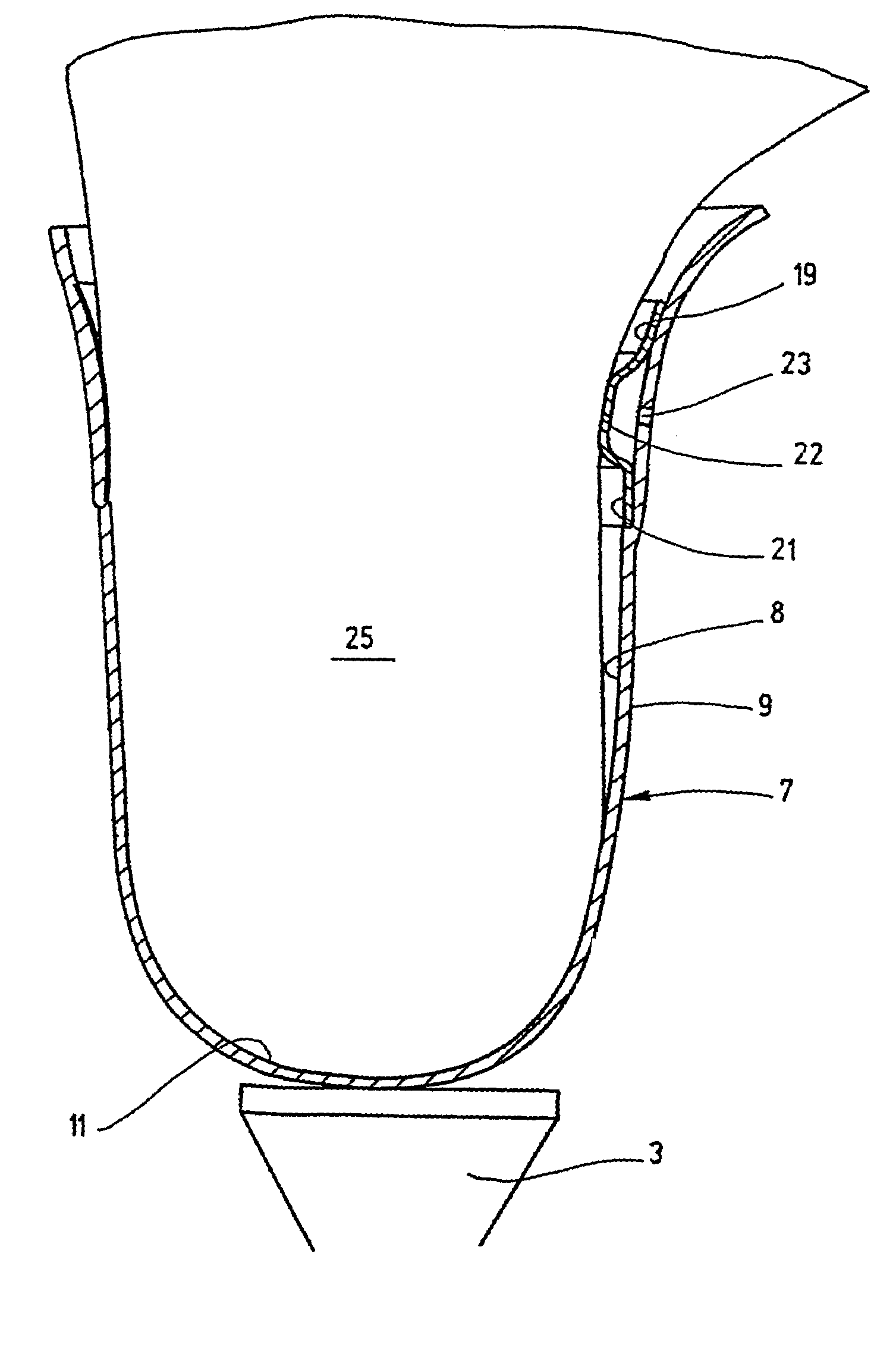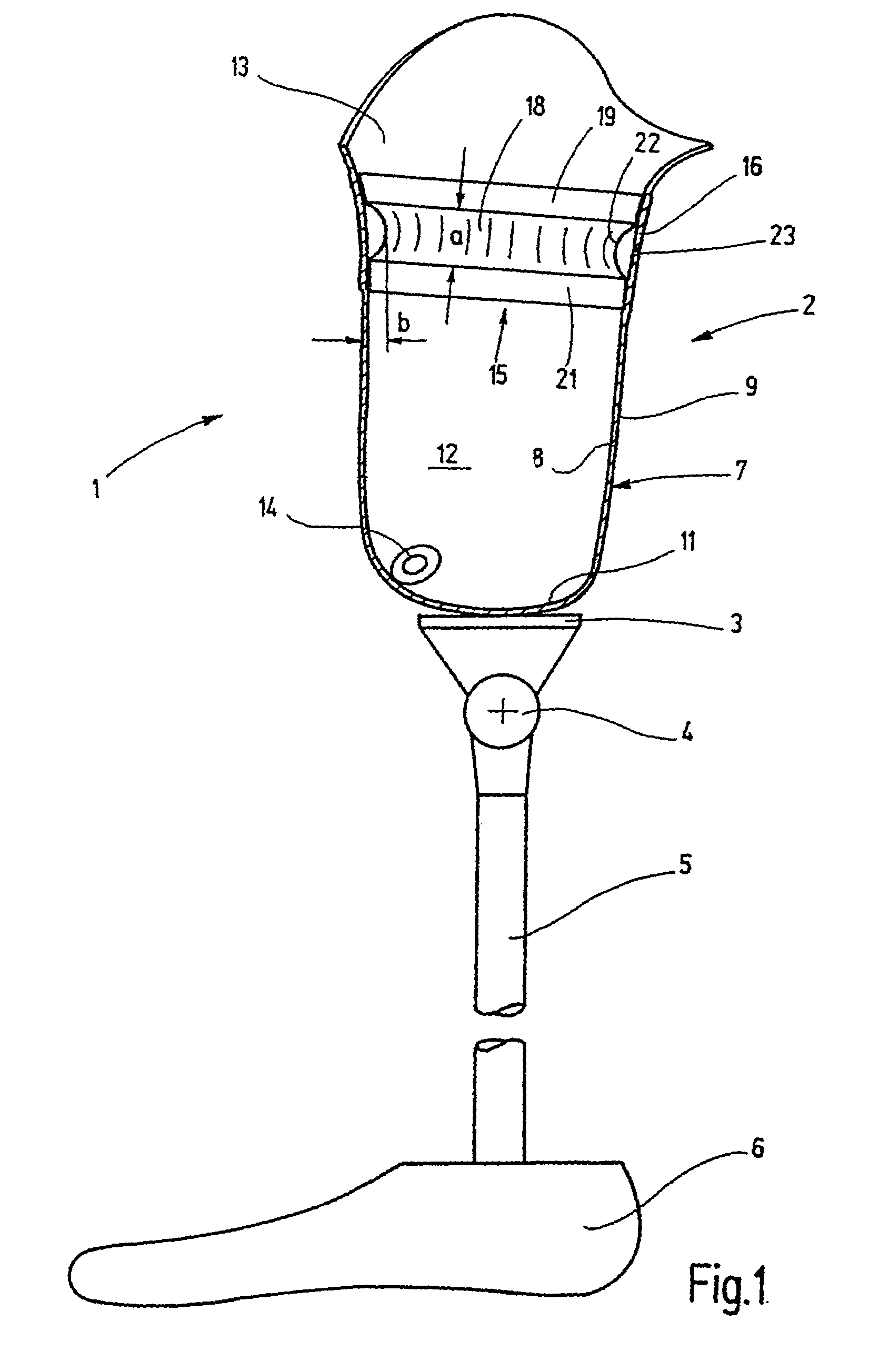Sealing sleeve for sealing residual limb in a prosthetic socket
a residual limb and sealing technology, applied in the field of sealing sleeves for sealing residual limbs, can solve the problems of comparatively large prestressing force, collapsed retention force, and loss of retention, and achieve good air tight sealing
- Summary
- Abstract
- Description
- Claims
- Application Information
AI Technical Summary
Benefits of technology
Problems solved by technology
Method used
Image
Examples
Embodiment Construction
[0037]In a highly diagrammatic manner, FIG. 1 shows an exemplary above-the-knee prosthesis 1 of the invention. The prosthesis 1 comprises a prosthetic socket 2 connected by an adapter 3 to an artificial knee joint 4. An artificial lower-leg having a foot 6 is connected to the artificial knee joint 4.
[0038]The prosthetic socket 2 is composed of a socket wall 7 having an inner wall 8 and an outer wall 9 and a socket distal end 11. The socket distal end 11 merges integrally into the socket wall 7 at the lower end of the wall. Jointly with the inner socket wall 8, the socket distal end 11 subtends a substantially cup-shaped inner volume 12 which is accessible through a proximal residual limb insertion opening at the proximal end. The length of the inside volume 12 and its shape depend on the kind of residual limb and the kind of prosthetic treatment involved. The specific nature of the inside volume 12 is not otherwise significant.
[0039]The prosthetic socket 2 is a so-called suction-soc...
PUM
 Login to View More
Login to View More Abstract
Description
Claims
Application Information
 Login to View More
Login to View More - R&D
- Intellectual Property
- Life Sciences
- Materials
- Tech Scout
- Unparalleled Data Quality
- Higher Quality Content
- 60% Fewer Hallucinations
Browse by: Latest US Patents, China's latest patents, Technical Efficacy Thesaurus, Application Domain, Technology Topic, Popular Technical Reports.
© 2025 PatSnap. All rights reserved.Legal|Privacy policy|Modern Slavery Act Transparency Statement|Sitemap|About US| Contact US: help@patsnap.com



